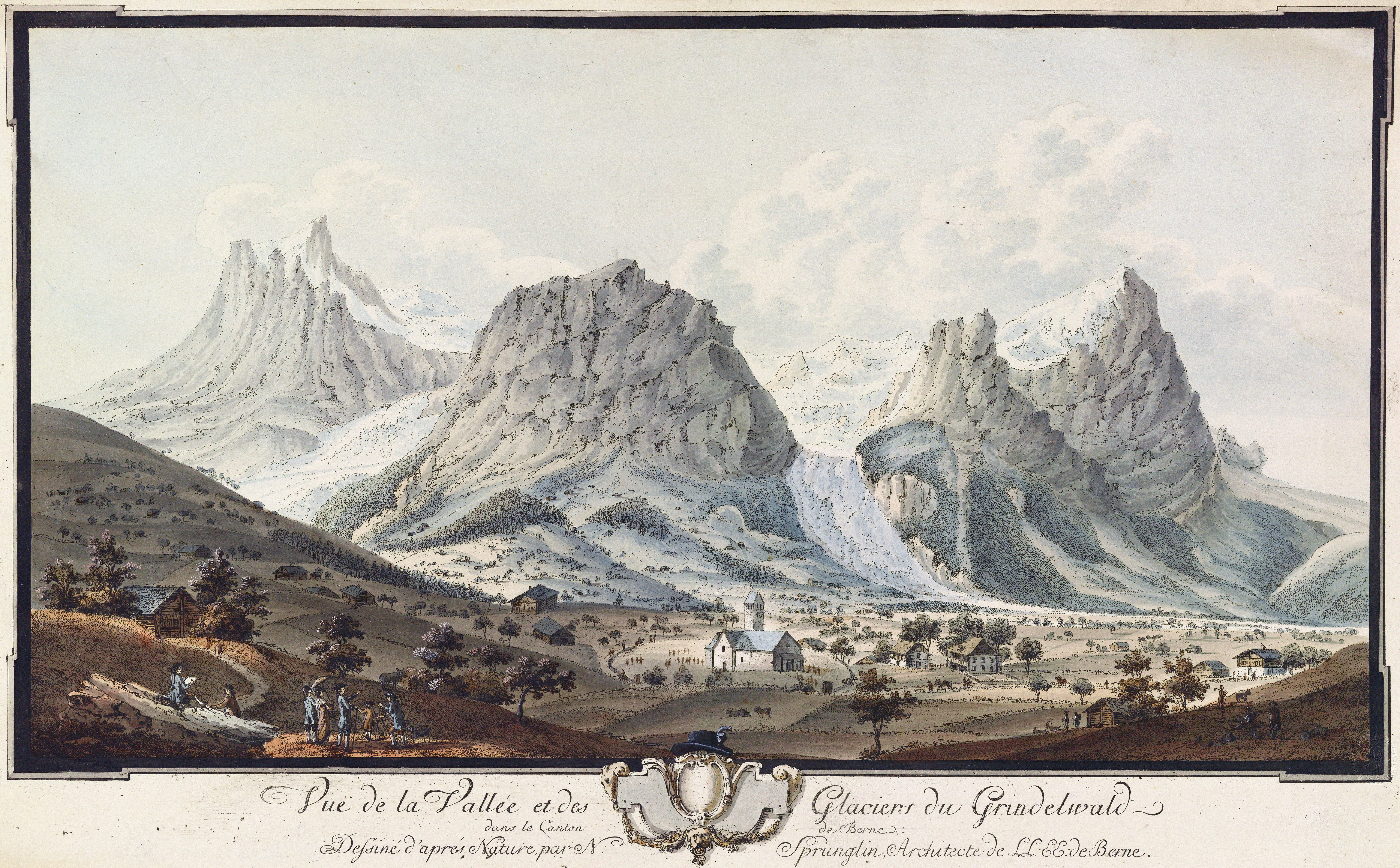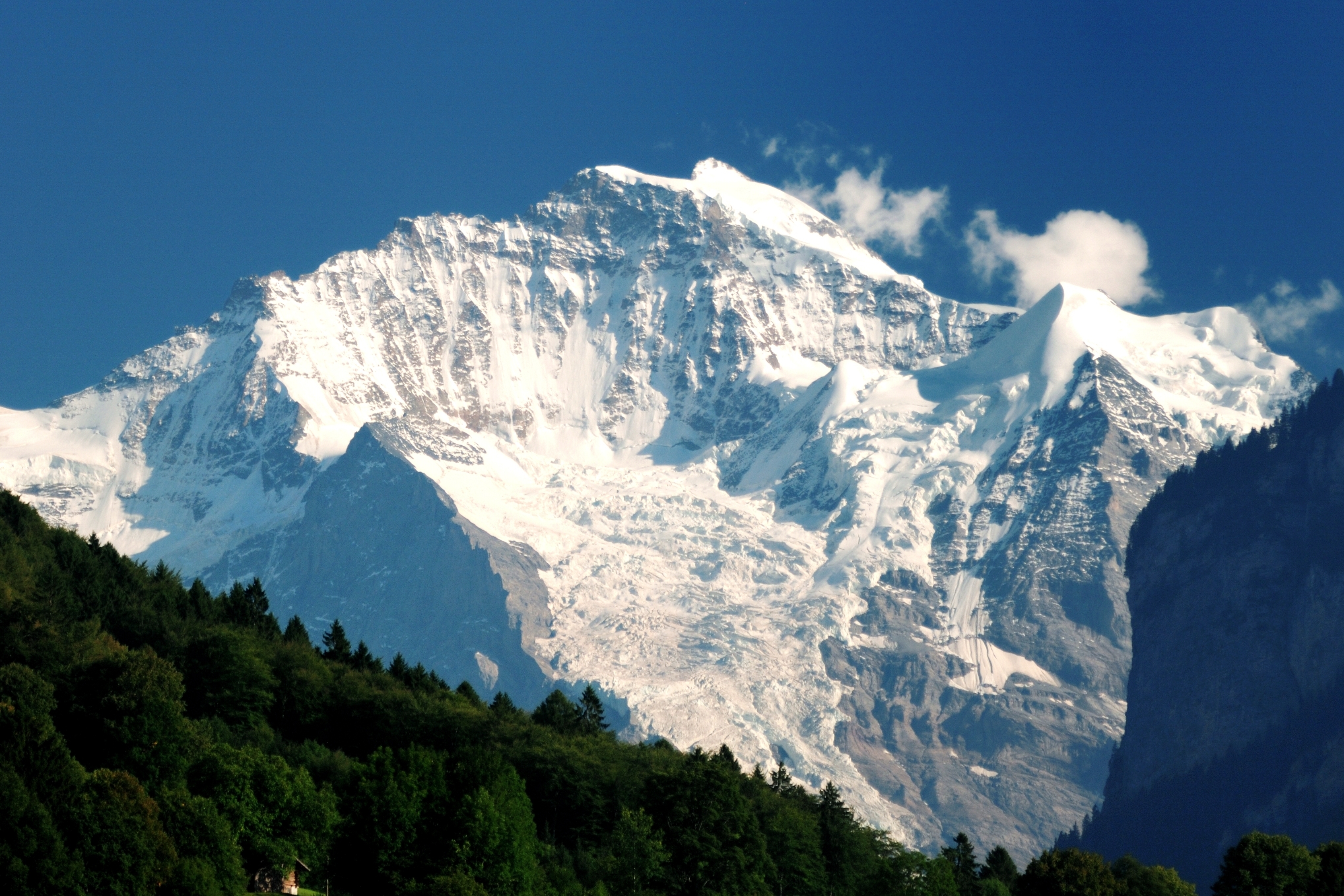|
Fritz Steuri
Fritz Steuri (born 25 July 1879 in Grindelwald, Switzerland, died 5 September 1950 in Grindelwald, Switzerland) was a Swiss people, Swiss mountain climber and Nordic skiing, Nordic and alpine skier. He was a three-time Swiss champion in cross-country skiing (sport), cross-country skiing. In 1921, he took part in the first ascent of the Mittellegigrat (the northeast ridge of the Eiger). Skier Fritz Steuri came into contact with skiing in the early 1890s when he saw the Englishman Gerald Fox (who lived at Tone Dale House) skiing in Grindelwald. In 1898, he bought his first pair of skis from a Grindelwald manufactory. The first ski race was held in Grindelwald before the turn of the century, in which Steuri, who pursued regular ski training, took part with other locals. Even in his job as a postman, which he held from 1899 until he became a mountain guide, he rendered valuable services to skiing.''Der Sommer- und Winterkurort'' (Rubi), pp. 83, 149. In 1902, he was among the foundin ... [...More Info...] [...Related Items...] OR: [Wikipedia] [Google] [Baidu] |
Grindelwald
Grindelwald is a village and Municipalities of Switzerland, municipality in the Interlaken-Oberhasli (administrative district), Interlaken-Oberhasli administrative district in the Cantons of Switzerland, canton of Bern (canton), Berne. In addition to the village of Grindelwald, the municipality also includes the settlements of Alpiglen, Burglauenen, Grund, Itramen, Mühlebach, Schwendi, Tschingelberg and Wargistal. Grindelwald village is located at AMSL, above sea level. Mentioned for the first time in 1146, it has become a major tourist destination of both Switzerland and the Alps since the golden age of alpinism in the 19th century. It is notably overlooked by the section of the Bernese Alps from the Wetterhorn to the Eiger, making up a huge natural barrier. Together with the adjacent valley of Lauterbrunnen, the valley of Grindelwald forms part of the Jungfrau Region of the Bernese Oberland, between Interlaken and the main crest of the Bernese Alps. Similarly to Lauterbrunnen, ... [...More Info...] [...Related Items...] OR: [Wikipedia] [Google] [Baidu] |
Adelboden
, neighboring_municipalities= Diemtigen, Frutigen, Kandersteg, Lenk im Simmental, Leukerbad (VS), Sankt Stephan , twintowns= } Adelboden is a mountain village and a municipality in Switzerland, located in the Frutigen-Niedersimmental administrative district in the Bernese Highlands. Geography Adelboden lies in the west of the Bernese Highlands, at the end of the valley of the river Entschlige (High German: ''Engstlige''), which flows in Frutigen into the Kander. Adelboden is a traditional Swiss mountain village on a terrace looking south to the Engstligen waterfalls. Also part of the village are the inhabited valleys of Gilbach, Stigelschwand, Boden, Hirzboden, and Ausserschwand. Church and main street are at , the highest point of the area is the Grossstrubel with , the lowest point is at in the Engstligen valley. The vegetation is alpine and sub-alpine, partially wooded, the slopes, the plateaus, and terraces usually alp meadows. The most salient mountains are Lo ... [...More Info...] [...Related Items...] OR: [Wikipedia] [Google] [Baidu] |
Finsteraarhorn
The Finsteraarhorn () is a mountain lying on the border between the cantons of Bern and Valais. It is the highest mountain of the Bernese Alps and the most prominent peak of Switzerland. The Finsteraarhorn is the ninth-highest mountain and third-most prominent peak in the Alps. In 2001 the whole massif and surrounding glaciers were designated as part of the Jungfrau-Aletsch World Heritage Site. Geography Despite being the most elevated, prominent and isolated mountain of both the Bernese Alps and the canton of Berne, the Finsteraarhorn is less known and frequented than the nearby Jungfrau and Eiger. This is due to its location in one of the most remote areas in the Alps, completely surrounded by un-inhabited glacial valleys. To its west lies the Fiescher Glacier, the second longest in the Alps, and to the east lie the Great Aar Glaciers. The smaller Lower Grindelwald Glacier lies north of the massif. The Finsteraarhorn is surrounded by the summits of the Schreckhorn a ... [...More Info...] [...Related Items...] OR: [Wikipedia] [Google] [Baidu] |
Jungfrau
The Jungfrau ( "maiden, virgin"), at is one of the main summits of the Bernese Alps, located between the northern canton of Bern and the southern canton of Valais, halfway between Interlaken and Fiesch. Together with the Eiger and Mönch, the Jungfrau forms a massive wall of mountains overlooking the Bernese Oberland and the Swiss Plateau, one of the most distinctive sights of the Swiss Alps. The summit was first reached on August 3, 1811, by the Meyer brothers of Aarau and two chamois hunters from Valais. The ascent followed a long expedition over the glaciers and high passes of the Bernese Alps. It was not until 1865 that a more direct route on the northern side was opened. The construction of the Jungfrau Railway in the early 20th century, which connects Kleine Scheidegg to the Jungfraujoch, the saddle between the Mönch and the Jungfrau, made the area one of the most-visited places in the Alps. Along with the Aletsch Glacier to the south, the Jungfrau is part of the Jungf ... [...More Info...] [...Related Items...] OR: [Wikipedia] [Google] [Baidu] |
Telemark Skiing
Telemark skiing is a skiing technique that combines elements of Alpine and Nordic skiing, using the rear foot to keep balance while pushing on the front foot to create a carving turn on downhill skis with toe-only bindings. Telemark skiing is named after the Telemark region of Norway, where the discipline originated. Sondre Norheim is often credited for first demonstrating the turn in ski races, which included cross country, slalom, and jumping, in Norway around 1868. Sondre Norheim also experimented with ski and binding design, introducing side cuts to skis and heel bindings (like a cable). History of Telemark skiing 19th and 20th centuries In the 1800s, skiers in Telemark challenged each other on "wild slopes" (ville låmir); more gentle slopes were described by the adjective "sla." Some races were on "bumpy courses" (kneikelåm) and sometimes included "steep jumps" (sprøytehopp) for difficulty. These 19th-century races in Telemark ran along particularly difficult trails ... [...More Info...] [...Related Items...] OR: [Wikipedia] [Google] [Baidu] |
Snowplough Turn
The snowplough turn, snowplow turn, or wedge turn is a downhill skiing braking and turning technique. It is the first turn taught to beginners, but still is useful to advanced skiers on steep slopes. Technique The front ski tips of the skis are together and the tails wide apart, with the knees rolled inwards slightly. By applying pressure against the snow with the inside edges of the skis speed is reduced, making turning in such a configuration and stopping completely possible. To turn, weight is shifted from the downhill, outside-of-the-turn ski to the uphill, inside-of-the-turn ski. As the turn is completed, the old uphill, inside ski then becomes the new downhill, outside ski. Successful completion of the technique in both directions leads to linked turns. Applications In ski instruction, the snowplough is a primary building block of skiing proficiency. Under the Arlberg technique for teaching skiing, beginners start with the snowplough then proceed to Stem Christie ... [...More Info...] [...Related Items...] OR: [Wikipedia] [Google] [Baidu] |




